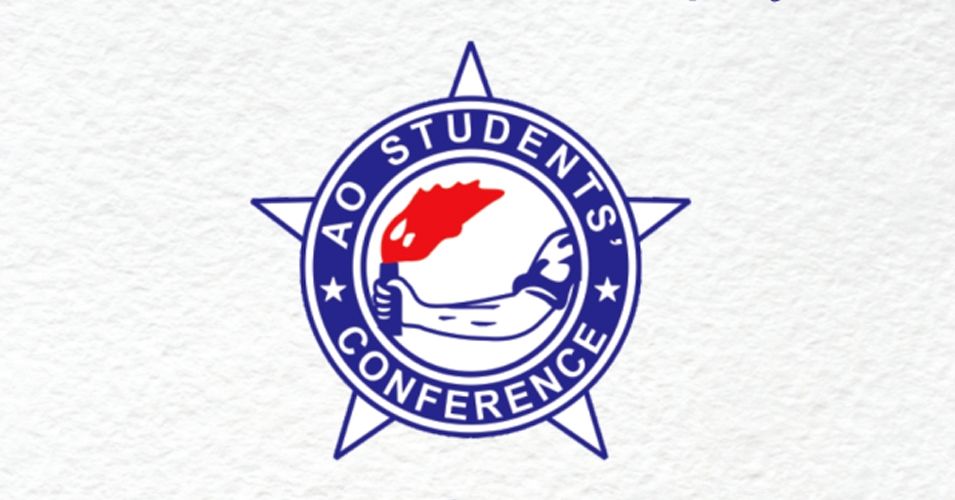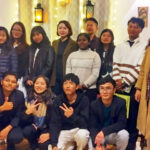In the coming decades, climate change will have a significant impact on food production, trade, and the culinary experiences of people around the world. Rising temperatures and changing weather patterns will disrupt how we traditionally grow many crops, leading to challenges in growing traditional crops tied to specific climates and local knowledge passed down through generations.
In the next 50 years, Nagaland is projected to have a climate akin to the present-day Lower Dir district in the Pakhtunkhwa province of Pakistan, according to Climate Analogue Modeling (CAM).
This climate shift might bring significant challenges to the region’s culinary traditions. For example, the renowned Naga King Chilli, a staple in Nagaland’s cuisine, may no longer thrive in the altered climate, impacting the flavor of Naga dishes. Additionally, local rice, another dietary staple, might become scarce due to water shortages in the changing climate.
‘Tasting Tomorrow Project’ and Nagaland
In response to these challenges, the ‘Tasting Tomorrow Project’ has emerged as a pioneering initiative led by the University of Arizona in collaboration with The Highland Institute in Kohima, Nagaland. This innovative project aims to preserve traditional delicacies in the face of climate change by substituting ingredients that thrive in climatic conditions similar to those projected by CAM in other parts of the world.
Jonathon Keats, an American conceptual artist, writer, and experimental philosopher, is a key figure behind the ‘Tasting Tomorrow Project’. He recently discussed the project’s concept and mission in a conversation with Mokokchung Times, shedding light on its approach to preserving traditional foods and flavors in the face of climate change.

Keats stated, “The foods we currently cherish, both in terms of flavor and essential ingredients, have thrived in the past climates suitable for their cultivation. However, as climate change disrupts these conditions, these foods become more dependent on irrigation and resource-intensive methods. Therefore, the project aims to anticipate the future climate in your region and proactively find ways to sustain the traditional foods you cherish by substituting with suitable ingredients.”
Keats further elaborated on the necessity of finding substitutions for native crops in recipes. “In Nagaland, King Chilly is an important ingredient in your cuisine. If you take a look at the cuisine in Lower Dir, Pakistan, you find Jalapeño Pepper. What if you were to make foods that use Jalapeño instead of King Chilli? We are also looking at different grains such as millets versus rice, black-eyed peas, and more.”
He explained that these substitutions can take the form of ‘direct substitution’ where, for instance, one type of bean is replaced by another bean, or ‘less direct substitution’ such as a grain replacing another grain.
The Unexpected Connection to Nagaland
Jonathon Keats revealed the serendipitous nature of how the ‘Tasting Tomorrow Project’ found its way to Nagaland. “To be honest, I had no idea about Nagaland prior to this. It was coincidental and had to do with another part of Pakistan. It turned out that the Climate Analogue for Tucson, Arizona was North-West India, so we needed to find a partner to work with,” he confided.
He continued to narrate how an online connection played a pivotal role in this unexpected collaboration. “I had a colleague in Australia, and I asked her if she knew anybody there. So she made a post online, and Michael Heneise saw her post and wrote to me online. He was like, ‘I’m nowhere near where you are looking for, but I think what you are doing is interesting,’ and he told me that he is in Nagaland.” Michael Heneise is the co-founder and director of The Highland Institute, Kohima.
Keats also revealed his fascination with Naga folklore and Easterine Kire’s literature, and cited his amazing experience with Naga scholars.
Currently, Keats is collaborating with Highland Institute’s scholar Tümüzo Katiry in the ‘Tomorrow Tasting Project.’ Katiry, a Canada-IDRC Myanmar Research Fellow, is actively involved in the Earthkeepers project along with the ‘Tasting Tomorrow Project.’
Keats expressed his excitement about the upcoming year, particularly in February when the Earthkeepers will bring the ‘Tasting Tomorrow Project’ to villages in Nagaland. He hopes this endeavor will be a remarkable exploration of food, combining the disciplines of food anthropology and the impacts of climate change on traditional culinary practices.
The Earthkeepers Project, with Catriona Child as its project coordinator and acting director of The Highland Institute, focuses on documenting traditional ecological knowledge and perceptions of climate change along the Myanmar-Nagaland border. This initiative seeks to facilitate meaningful dialogue about climate justice and food security. The project is funded by the International Development Research Centre (IDRC) of Canada.
Meanwhile, Katiry gave an update on the experiment being carried out at The Highland Institute, stating, “We have experimented with some Naga traditional cuisines and we will continue to do so in several villages in Nagaland. In a way, Nagas are already enjoying many traditional cuisines with substituted ingredients. This adaptability to culinary changes is very important for Nagas to face the future climate change crisis.”



